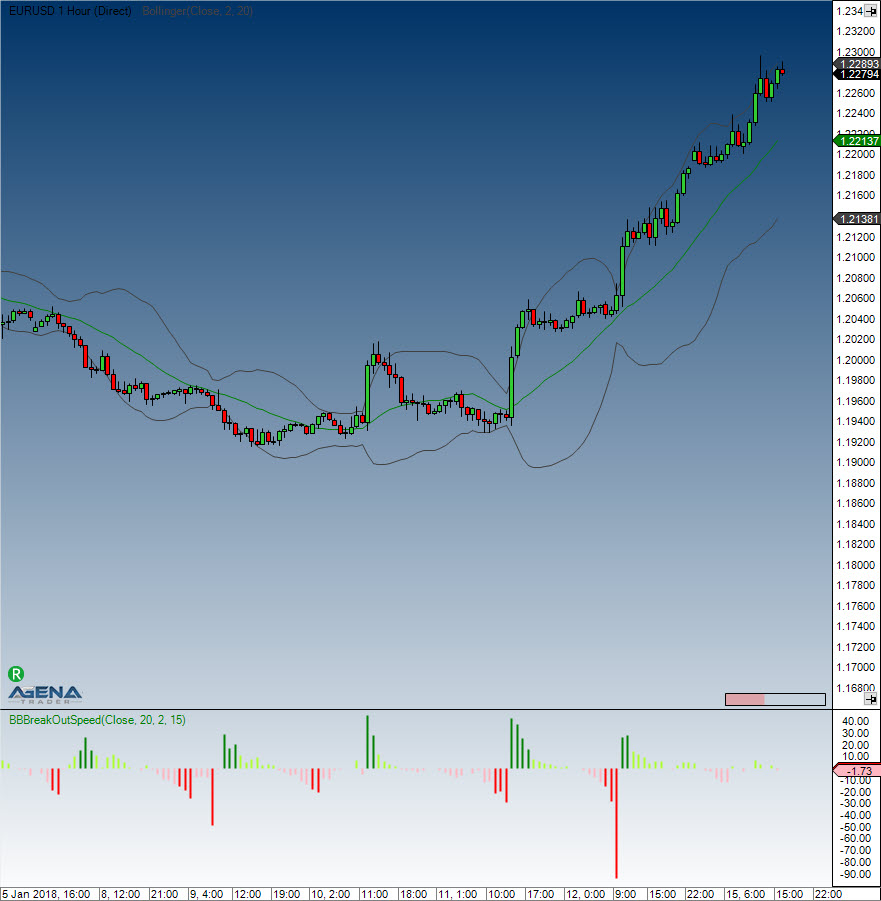BBBreakOutSpeed
Description
Shows the change in the width of the Bollinger Bands in comparison to the width of the Bollinger Bands of the previous bar. Negative (red) means that the Bollinger Bands are drawing together. (Larger than SignalSize -> Short, characterized by a more intense red) Positive (green) means that the Bollinger Bands are diverging. (Larger than SignalSize -> Long, characterized by a more intense green)
Usage
BBBreakOutSpeed(double bandsDeviation, int bandsPeriod, int signalsize)
BBBreakOutSpeed(IDataSeries inSeries, double bandsDeviation, int bandsPeriod, int signalsize)
BBBreakOutSpeed(double bandsDeviation, int bandsPeriod, int signalsize)[int barsAgo]
BBBreakOutSpeed(IDataSeries inSeries, double bandsDeviation, int bandsPeriod, int signalsize)[int barsAgo]Return value
double
When using this method with an index (e.g. BBBreakOutSpeed(5)[int barsAgo] ), the value of the indicator will be outputted for the referenced bar.
Parameters
inSeries Input data series for the indicator
bandsDeviation Standard deviation for the Bollinger Bands
bandsPeriod Periods for the Bollinger Bands
signalsize The minimum height of the bar in order for it to produce a signal (long, short)
Visualization

Example
Last updated